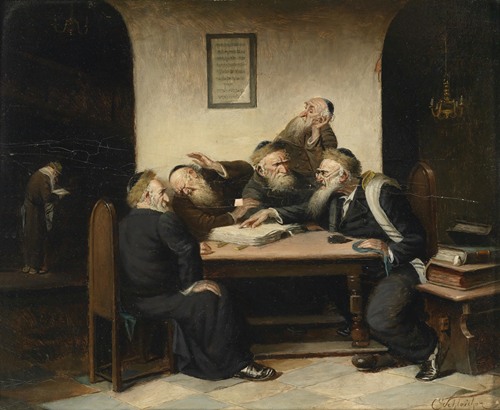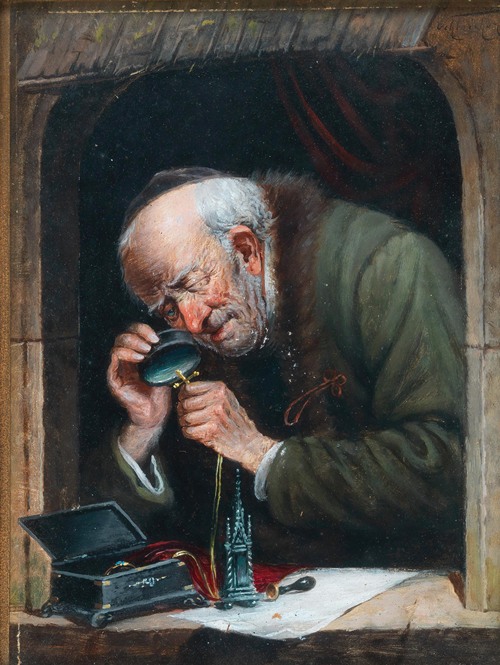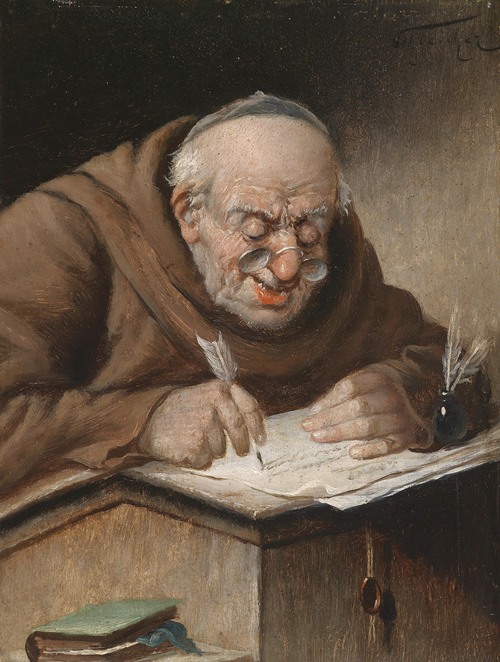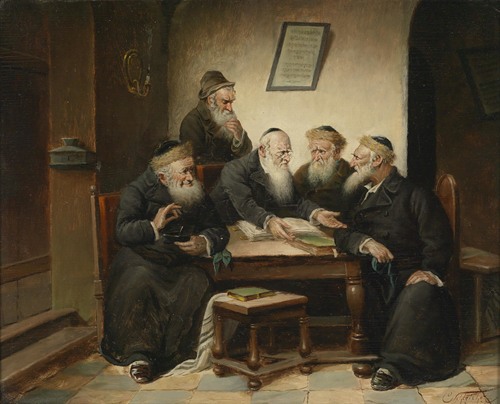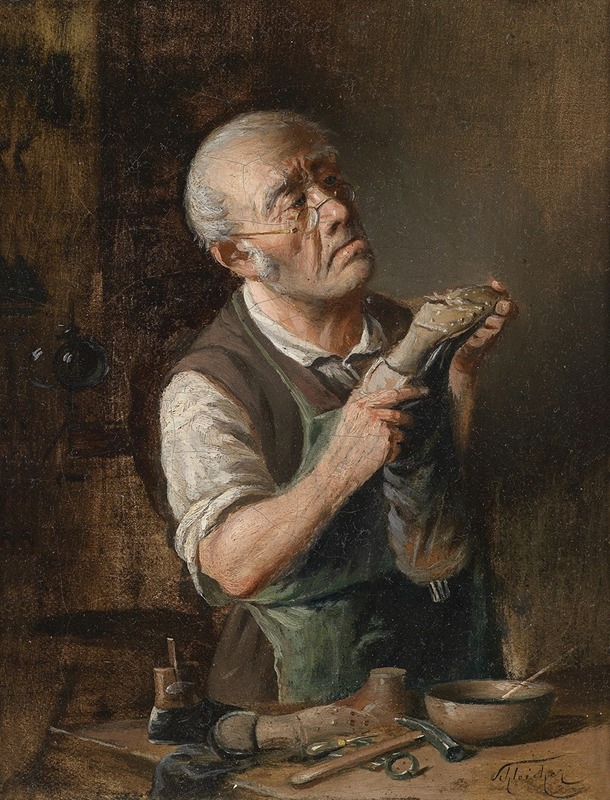
Carl Schleicher was a nineteenth-century realist painter, born in Lviv (Galicia, Austrian Empire) in 1825. He died in Padua, Kingdom of Italy, on October 2, 1903.
A disciple of the Austrian painter Ferdinand Georg Waldmüller, Schleicher developed his work in costumbrist style, mainly in Vienna between 1859 and 1871. On several occasions he exhibited his work at the Österreichisches Kunstverein (Austrian Arts Club). Presumably of Jewish origin, Schleicher exhibited genre paintings with Jewish scenes at the Österreichisches Kunstverein during the aforementioned period.
His art is essentially oil painting and manifests the influence of Dutch genre painting of the 17th century.
Part of Carl Schleicher's artistic production is closely related to Jewish studies and Ashkenazic art. The exchange of ideas and interpretations among the Talmudic rabbis was a subject to which Schleicher devoted a considerable number of oil paintings. Loaded with anecdotal material, such paintings constitute a valuable record of the customs and mores of Ashkenazi Jews in Europe, whose culture and heritage are known as the Yiddishkayt. Schleicher's record is valuable because most of Europe's Ashkenazi communities and their cultural diversity have been lost due to the Shoah.
